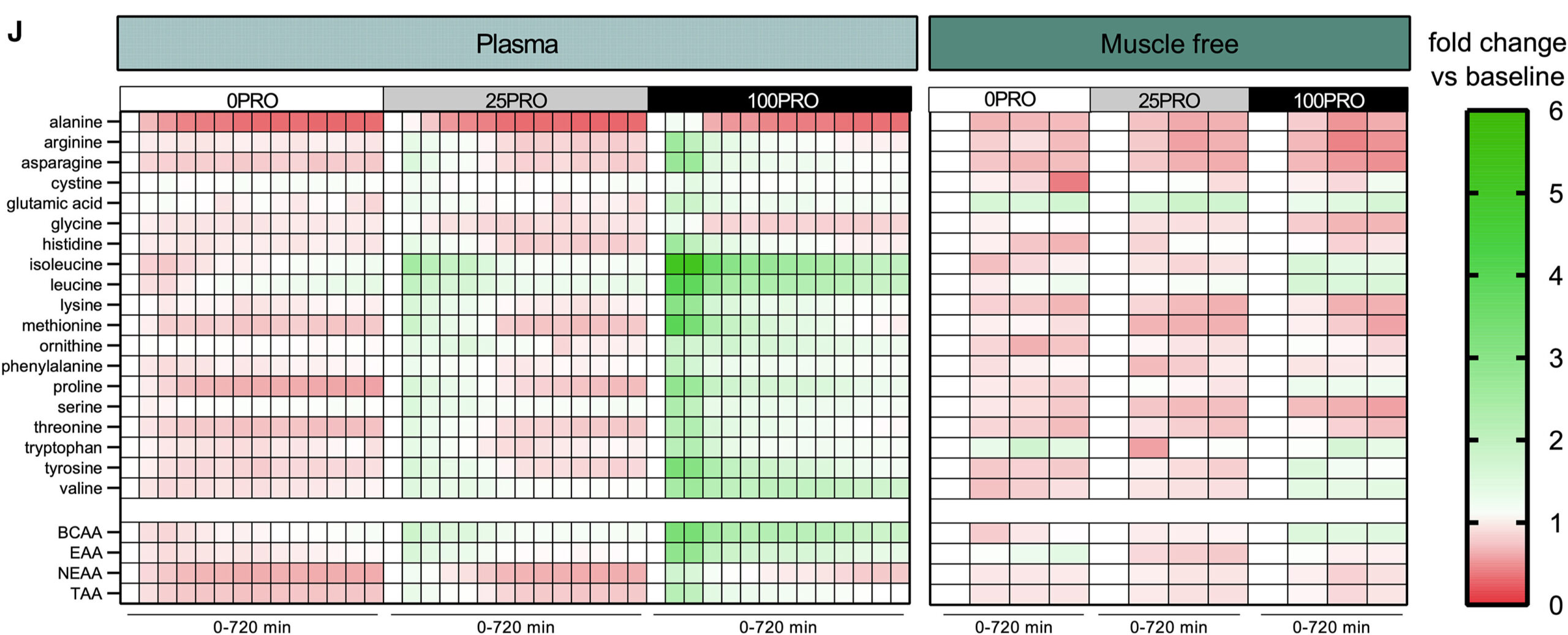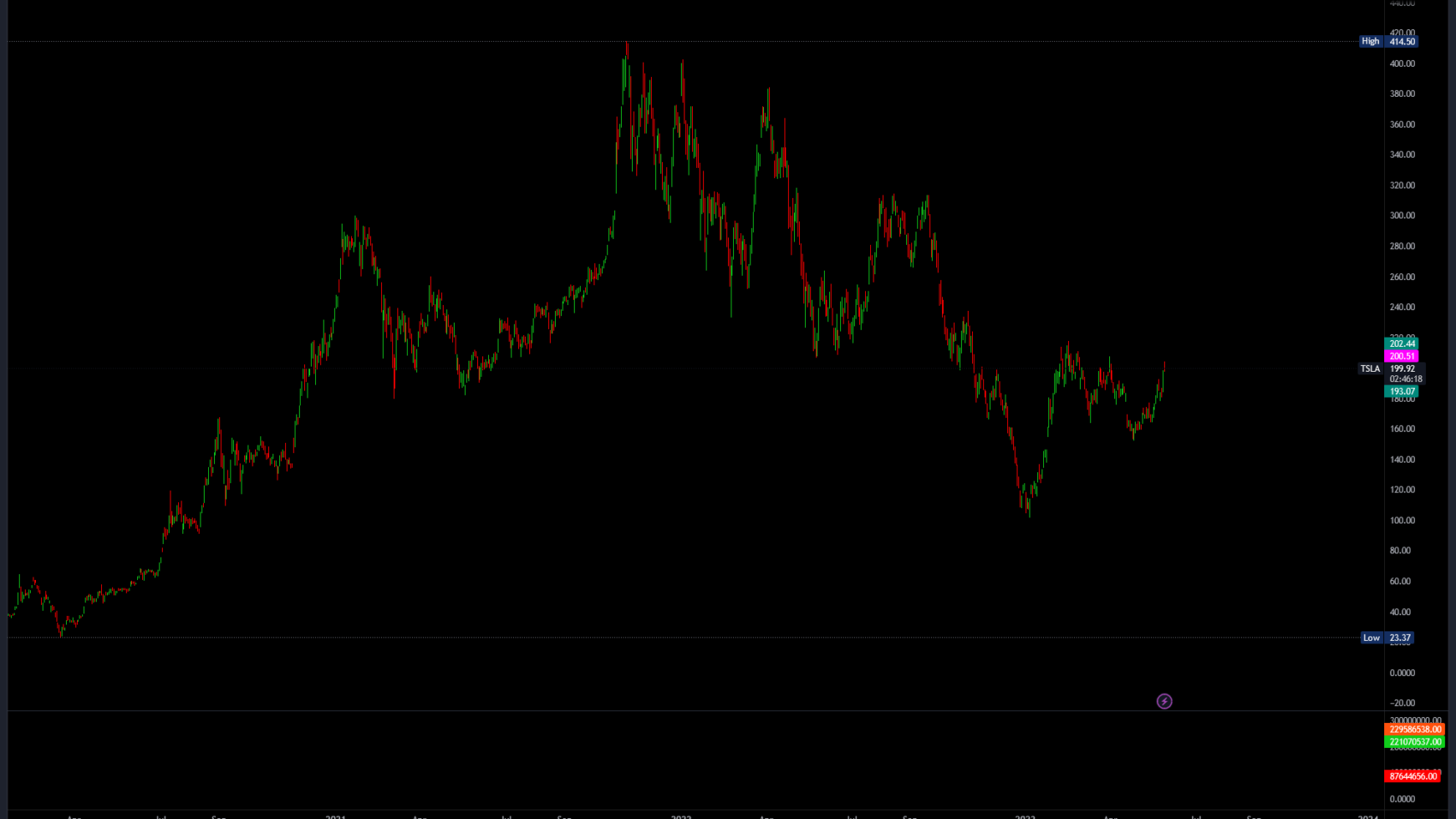Table of Contents
From Theory to Muscle: Transforming Views on Post-Workout Protein Intake
Have you ever wondered how much protein your body needs after a workout to maximize muscle growth? Conventional wisdom has always suggested moderation, often advising against high protein consumption in one sitting. However, a groundbreaking study titled “The anabolic response to protein ingestion during recovery from exercise has no upper limit in magnitude and duration in vivo in humans” turns these old notions on their heads.
In this detailed exploration, we dive into the depths of this fascinating research, unraveling the complexities of protein metabolism and its implications for muscle recovery. This study is not just another drop in the ocean of fitness research; it represents a significant leap forward in understanding how our bodies process and utilize nutrients post-exercise. Whether you are a seasoned athlete, a fitness enthusiast, or just someone curious about optimal nutrition, the insights from this research are bound to reshape your views on protein intake.
However, before we delve into the nitty-gritty of the study, let us set the stage by understanding why this research is pivotal. For decades, athletes, bodybuilders, and fitness gurus have meticulously planned their protein intake, often spreading it throughout the day to maximize absorption and muscle synthesis. The idea was that there is a cap to how much protein your body can use after a workout, with any excess going to waste or being used for energy rather than muscle repair. This study challenges that paradigm, suggesting that our bodies might be capable of utilizing much more protein than previously thought and for a longer duration post-exercise.
As we navigate through this article, we will dissect the methodology, analyze the findings, and discuss the practical implications of this research. By the end, you will have a deeper understanding of the study and how its conclusions might influence your approach to post-workout nutrition. So, buckle up and prepare for a journey into protein metabolism and muscle recovery – you might find some of your long-held beliefs about nutrition being challenged.
Understanding Protein’s Role in Muscle Recovery

In fitness and nutrition, protein has always been revered as a key player in muscle recovery and growth. To fully grasp the significance of the recent study’s findings, it is essential first to comprehend the fundamental role protein plays in our body, especially post-exercise.
The Basics of Protein and Muscle Synthesis
To appreciate the study’s findings, let us first delve into how protein aids muscle recovery and growth. Proteins are vital macronutrients of amino acids essential for numerous bodily functions, including muscle repair and synthesis. After a strenuous workout, our muscles undergo micro-tears. Protein is crucial in repairing these tears, facilitating muscle recovery, and contributing to muscle hypertrophy (growth). Muscle protein synthesis (MPS) is where the magic happens: amino acids from proteins are used to rebuild and grow muscle fibers, making them stronger and sometimes larger.
The relationship between protein intake and MPS is a keen interest among athletes and researchers alike. Traditionally, it was believed that there is a saturation point in MPS, beyond which additional protein intake does not translate into increased muscle growth. This belief has shaped many dietary practices, such as regularly consuming moderate protein.
Debunking Myths Around Protein Intake
Many fitness enthusiasts adhere to strict protein intake rules, but how accurate are these beliefs? Standard guidelines suggest consuming around 20-25 grams of protein post-workout to maximize MPS. This advice stems from studies indicating that MPS plateaus at this intake level in a single meal. However, these guidelines do not consider factors like the total daily protein intake, the type of protein consumed, and individual differences in metabolism and exercise intensity.
Moreover, the focus has primarily been on short-term MPS, typically measured over a few hours post-exercise. This narrow view has limited our understanding of how protein intake affects long-term muscle repair and growth. A recent study challenges this perspective by suggesting that our bodies might be more adept at utilizing protein than previously thought, even when consumed in large amounts. This could mean the approach to protein timing and quantity could be more flexible than the traditional guidelines suggest.
As we delve further into the study in the following sections, we will explore how these new findings might revolutionize our approach to post-exercise nutrition. By understanding the intricacies of protein metabolism and muscle recovery, we can better tailor our diets to support our fitness goals and overall health. Whether you are an athlete striving for peak performance or someone looking to maintain a healthy lifestyle, rethinking protein intake could be a game-changer in your nutritional strategy.
A Deep Dive into the Study

To appreciate the groundbreaking nature of the recent protein absorption and muscle recovery research, it is crucial to understand its methodology and participant profile. This section looks at how the study was conducted, the innovative approaches used, and who the subjects were, providing a clear picture of the research’s scope and potential implications.
Methodology – Tracing Protein’s Path
The researchers employed a sophisticated quadruple isotope tracer feeding-infusion approach to trace protein utilization in the body. This method represents a significant advancement in nutritional science research, allowing for a detailed and accurate analysis of how protein is metabolized post-exercise. The use of isotopes – stable, non-radioactive forms of elements – enabled the researchers to track the journey of amino acids from the ingested protein through their incorporation into muscle tissue.
This approach allowed the researchers to measure several critical aspects of protein metabolism:
- how much of the ingested protein was broken down
- how much was used for muscle protein synthesis
- how these processes varied with different protein intake levels
Importantly, this method provided insights into the amount of protein used and the duration over which it was utilized, offering a more comprehensive view of protein metabolism than previous studies.
Participant Profile – Who Were the Subjects?
Understanding who participated in the study is crucial for contextualizing its findings. The study focused on a specific demographic: young men who were regular exercisers. This group was chosen because they are typically at the peak of their muscle-building capacity, making it easier to observe and measure the effects of protein ingestion on muscle synthesis.
The participants were divided into groups, each consuming different amounts of protein post-exercise: 25 grams, 100 grams, or no protein. This wide range of protein intake levels allowed the researchers to compare the effects of moderate to high protein consumption on muscle recovery and growth.
The choice of participants and the varied levels of protein intake provided a unique opportunity to study how different bodies react to varying amounts of protein after exercising. However, it is essential to note that the study’s focus on young, active men means that the findings might not directly apply to other groups, such as older adults, women, or those with different exercise habits or health conditions.
As we unpack this study’s findings, we will explore how these innovative methods and the specific participant profile contribute to our evolving understanding of protein’s role in muscle recovery. The study’s implications could shift how athletes and fitness enthusiasts approach their post-workout nutrition, emphasizing the importance of tailored dietary strategies to optimize muscle growth and recovery.
Unpacking the Findings
The study’s revelations about protein absorption and utilization post-exercise are both intriguing and potentially transformative for nutritional science and fitness practices. This section delves into the study’s key findings, shedding light on how these insights challenge previous beliefs and open new avenues for optimizing muscle recovery and growth.
Protein Absorption Beyond Expected Limits
One of the most striking revelations of the study is that our bodies can absorb and utilize a more considerable amount of protein post-exercise than previously thought. This finding defies the longstanding belief that protein absorption has a strict upper limit, beyond which any additional intake is wasted or simply used for energy.
The study showed that even with a high protein intake of 100 grams, the body continued to effectively absorb and utilize the protein over a prolonged period – up to 12 hours post-consumption. This extended duration of protein utilization is a critical factor in promoting muscle repair and growth. It suggests that the body’s ability to use protein is not just about the immediate hours following exercise but extends well into the recovery period.
Duration of Anabolic Response
Another significant finding is the extended duration of the anabolic response – the body’s muscle-building process – triggered by protein intake. Traditional views held that this anabolic window was relatively short, necessitating quick protein intake post-exercise. However, the study challenges this notion by demonstrating that the anabolic response to protein intake is more significant and lasts much longer than previously believed.
This prolonged anabolic response indicates that the body’s muscle-building machinery remains active and responsive to protein intake for a much longer time frame. This suggests that the timing of protein consumption post-exercise could be more flexible than many athletes’ rigid schedules. It also implies that the body can continue to repair and build muscle effectively, even many hours after a workout, as long as adequate protein is provided.
These findings have profound implications for dietary strategies in sports and fitness. They suggest that consuming more significant amounts of protein in a single sitting could be just as effective, if not more so, than spreading protein intake throughout the day. This could lead to more simplified and flexible nutritional approaches, especially for athletes and individuals engaging in regular intensive exercise.
In the following sections, we will explore how these insights could be applied practically and what they mean for the broader landscape of nutrition and fitness. The study’s revelations enhance our understanding of protein metabolism and provide valuable guidance for those looking to optimize their muscle recovery and growth through targeted nutritional strategies.
Practical Applications and Implications
The groundbreaking findings from this study on protein absorption and muscle recovery have significant implications for athletes, fitness enthusiasts, and the general population. This section explores how these insights can be practically applied to optimize muscle growth and recovery and their broader implications in nutrition science.
Rethinking Protein Intake for Athletes
The study’s findings necessitate reevaluating dietary strategies for athletes and individuals engaged in regular intensive exercise. The ability of the body to absorb and utilize a more significant amount of protein over a prolonged period suggests that the traditional approach of consuming small, frequent doses of protein throughout the day might not be the only effective method for muscle recovery and growth.
This revelation opens up the possibility of more flexible and potentially more convenient protein consumption patterns. Athletes could consider consuming more significant amounts of protein in fewer sittings, possibly aligning their protein intake more closely with their main meals. This approach simplifies meal planning and ensures that the body has a sustained supply of amino acids for muscle repair and growth over an extended period.
Moreover, this insight could lead to more effective post-workout recovery strategies for those involved in endurance or high-intensity training. By understanding that their body can utilize high amounts of protein efficiently, they can tailor their recovery meals or shakes to include more protein, potentially enhancing muscle recovery and growth.
Broader Implications for Nutrition Science
Beyond sports and fitness, the study’s implications extend to broader aspects of human nutrition science. It challenges the traditional understanding of protein metabolism and suggests that our bodies may be more adaptable in handling varying amounts of protein than previously believed.
For dietitians, nutritionists, and health practitioners, these findings could inform new guidelines for protein intake, particularly in the context of muscle recovery and growth. It also highlights the importance of considering individual variability in dietary planning. What works for one person regarding protein intake and timing might not be as effective for another, underscoring the need for personalized nutrition plans.
Additionally, the study contributes to the ongoing research on protein’s role in overall health and well-being. Understanding how the body metabolizes protein can affect managing weight, aging, and even chronic diseases where muscle maintenance and growth are crucial.
In summary, the study’s findings challenge the traditional views on protein intake and muscle recovery and offer new perspectives for practical dietary strategies. Whether for athletes looking to optimize their performance or for individuals aiming to maintain a healthy lifestyle, these insights provide valuable guidance on effectively incorporating protein into their diets. As we conclude, we will reflect on how these findings could shape the future of fitness and nutrition, potentially leading to more tailored and practical approaches to dietary planning and health management.
Critical Analysis of the Study
While the study on protein absorption and muscle recovery offers groundbreaking insights, it is essential to critically analyze its strengths, limitations, and areas for future research. This comprehensive evaluation helps understand the study’s place in the broader context of nutritional science and fitness.
Strengths and Novelty
The study stands out for several reasons. Firstly, its innovative methodology, particularly the use of a quadruple isotope tracer feeding-infusion approach, represents a significant advancement in nutritional research. This technique allowed for precise tracking of protein metabolism, providing a detailed and accurate picture of how protein is absorbed and utilized in the body post-exercise.
Another strength lies in the study’s comprehensive approach to examining protein metabolism over an extended period. Previous research often focused on short-term protein synthesis, but this study broadened the scope to 12 hours, offering new insights into how the body processes protein over a longer duration.
Additionally, the study’s focus on a high protein intake of 100 grams provided valuable data on the body’s capacity to handle larger quantities of protein, challenging the traditional belief that there is a limited capacity for protein absorption and utilization after exercise.
Limitations and Areas for Further Research
Despite its significant contributions, the study is not without limitations. One major limitation is its narrow participant demographic – young, physically active men. This specificity raises questions about the applicability of the findings to other groups, such as older adults, women, people with different physical activity levels, or those with metabolic disorders.
Another area of consideration is the practicality of consuming 100 grams of protein in one sitting, as used in the study. For many individuals, particularly those with smaller appetites or dietary restrictions, consuming such a high amount of protein may be challenging or unfeasible.
Furthermore, the study does not address the long-term effects of consistently high protein intake on various aspects of health, such as kidney function, bone health, and overall metabolism. These are crucial areas for future research, especially considering the growing popularity of high-protein diets.
Future Research Directions
The findings of this study open several avenues for future research. One key area is investigating how different types of protein (such as plant-based vs. animal-based) are metabolized and utilized for muscle recovery and growth.
Another important direction is studying the impact of high protein intake over the long term, assessing both the benefits and potential risks associated with various levels of protein consumption.
Research involving a broader and more diverse participant pool, including different age groups, genders, and health statuses, is also essential to understand the generalizability of the findings.
In conclusion, while the study provides valuable insights into protein metabolism post-exercise, it is a stepping stone in an ongoing research journey. Its findings should be interpreted with an understanding of its limitations and considered a part of a larger, evolving conversation about nutrition, exercise, and health. As we move into the future, continued research and critical analysis will be fundamental in fully harnessing the potential of these insights for fitness and health optimization.
The Future of Fitness: Protein’s Pivotal Role
The recent study on protein absorption and muscle recovery enriches our current understanding and paves the way for future perspectives in the realms of fitness and nutrition. In this section, we reflect on the key takeaways from the study and envision the potential changes and advancements in the fitness world that these findings could spur.
Summarizing Key Takeaways
At the core of this study is the revelation that the human body can absorb and utilize significantly more protein post-exercise than previously thought, and this ability extends over a longer duration. This challenges the long-held belief that there is a strict upper limit to how much protein can be effectively used for muscle synthesis after a workout. Instead, the study suggests a more dynamic and capable system where the body can continue to repair and build muscle efficiently for up to 12 hours following protein intake.
This insight is transformative. It means that athletes and fitness enthusiasts might not need to adhere as strictly to the conventional protein timing and quantity guidelines. Instead, they could have more flexibility in planning their protein intake, possibly consuming more significant amounts in fewer sittings without worrying about inefficiency or waste.
Personal Reflection on the Study
Reflecting on these findings, one cannot help but envision a future where fitness and nutrition guidelines are more personalized and less rigid. The study underscores the importance of considering individual variability in dietary planning. What works optimally for one person regarding protein intake and timing might differ for another based on factors like age, gender, training intensity, and overall health.
The study also opens doors for further research into different types of proteins and their specific impacts on muscle recovery and growth. This could lead to more tailored dietary recommendations, where protein source and quality are as crucial as quantity.
Implications for the Fitness Industry
Based on this research, the fitness industry will likely see nutritional guidelines and recommendations changes. Personal trainers, nutritionists, and dietitians might start advising their clients with a new understanding of protein metabolism. This could also lead to a shift in the marketing and formulation of protein supplements and recovery meals, focusing on catering to the extended anabolic window revealed by the study.
Moreover, the findings could influence how fitness programs are designed, particularly those aimed at muscle building and recovery. Fitness professionals might integrate nutritional advice more closely with workout routines, emphasizing the importance of post-workout protein intake in line with the new findings.
Embracing a New Paradigm
In conclusion, this study marks a significant step in understanding protein metabolism and its role in fitness. As we embrace these new insights, the future of fitness and nutrition looks more adaptable, personalized, and efficient. The evolving narrative around protein intake not only benefits athletes and fitness enthusiasts but also contributes to the broader understanding of human health and well-being. As research continues to unfold, staying informed and adaptable will be vital in maximizing the benefits of protein for muscle recovery and growth.
Frequently Asked Questions (FAQ Section)
This section addresses frequently asked questions about the study on protein absorption and muscle recovery and broader queries related to overall fitness and nutrition. Here are 20 questions with concise answers to provide clarity and additional insights.
- What does the study say about the maximum amount of protein the body can use post-exercise?
- The study suggests that the body can utilize more protein, with effective absorption even at high intakes like 100 grams.
- How long does the body use protein for muscle repair after exercise?
- Protein utilization for muscle repair can last up to 12 hours post-exercise, longer than the previously believed shorter anabolic window.
- Does the type of protein consumed matter for muscle recovery?
- Yes, different proteins have varying digestion rates and amino acid profiles, which can influence muscle recovery. However, the study did not specify protein types.
- Is it better to consume protein immediately after a workout?
- While immediate protein consumption can be beneficial, this study suggests more flexibility in timing, with effective utilization for several hours post-exercise.
- Can consuming too much protein be harmful?
- Excessive protein intake over a long period may strain kidneys, especially in individuals with pre-existing kidney conditions. It is essential to balance protein with other nutrients.
- How does this study affect protein intake recommendations for athletes?
- Athletes might consider consuming higher amounts of protein in fewer sittings, aligning with their main meals for convenience without compromising muscle recovery.
- Should non-athletes also increase their protein intake?
- Non-athletes should tailor their protein intake based on their activity level, health goals, and dietary needs. Higher protein intake might not be necessary for everyone.
- How can vegetarians or vegans meet high protein requirements?
- Plant-based proteins like legumes, tofu, tempeh, and seitan and supplements like pea or rice protein can help vegetarians and vegans meet their protein needs.
- Does age affect protein absorption and muscle recovery?
- Yes, older adults may have a diminished response to protein intake and may require more protein for adequate muscle recovery than younger individuals.
- How should one balance protein with other nutrients?
- A balanced diet with carbohydrates, fats, vitamins, and minerals is crucial. Carbs are vital for energy, and fats are essential for hormone production and nutrient absorption.
- What are the best sources of protein for muscle recovery?
- Lean meats, dairy, eggs, and fish are excellent for muscle recovery. Plant-based sources like lentils, chickpeas, and quinoa are also good options.
- Can hydration levels affect protein metabolism?
- Adequate hydration is vital for overall metabolism, including protein synthesis. Dehydration can negatively impact muscle recovery and overall health.
- Is it necessary to take protein supplements?
- Supplements are not necessary if dietary protein needs are met through food. However, they can be convenient for those struggling to consume enough protein.
- What are some common mistakes in protein consumption for fitness?
- Over-reliance on supplements, neglecting whole food sources, and imbalanced intake (too much or too little) are common mistakes.
- How does sleep affect muscle recovery and protein needs?
- Adequate sleep is crucial for muscle recovery, as growth hormone released during sleep aids in muscle repair. Poor sleep can hinder the benefits of protein intake.
- What is the role of exercise intensity in protein needs?
- Higher-intensity workouts typically require more protein for effective recovery due to increased muscle damage and repair needs.
- Can protein intake influence weight loss or weight gain?
- Protein can aid in weight loss by promoting satiety and preserving lean muscle mass. For weight gain, it helps in building muscle mass when combined with exercise.
- Should protein intake vary on rest days vs. workout days?
- While needs may be slightly lower on rest days, maintaining a consistent protein intake can aid in ongoing muscle repair and growth.
- How does stress impact protein needs and muscle recovery?
- Chronic stress can impair recovery and increase protein needs due to its catabolic effects on muscle tissue.
- What are some simple high-protein meal ideas for post-workout?
- Meals like grilled chicken with quinoa and vegetables, a protein shake with banana and almond milk, or a tofu stir-fry with brown rice are great options.
These questions and answers provide a broad understanding of the study’s implications and general fitness nutrition. Remember, individual needs vary greatly, so it is essential to tailor dietary choices to your health goals and lifestyle.
References
The anabolic response to protein ingestion during recovery from exercise has no upper limit in magnitude and duration in vivo in humans
Author: Jorn Trommelen,Glenn A.A. van Lieshout,Jean Nyakayiru,Andrew M. Holwerda,Joey S.J. Smeets,Floris K. Hendriks,Janneau M.X. van Kranenburg,Antoine H. Zorenc,Joan M. Senden,Joy P.B. Goessens,Annemie P. Gijsen,Luc J.C. van Loon
Publication: Cell Reports Medicine
Publisher: Elsevier
Date: 19 December 2023











